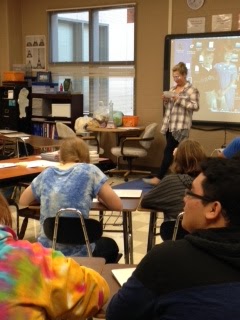The importance of PLAY TESTING!! This game started out as an idea...I wanted to adapt Go Fish to apply writing reflexive verbs in the near future (futur prôche). So, I created a deck of cards where students had to match a "book" of four to complete a match "Je vais me browser." Then, I "play tested" and most importunity, asked the kids for feedback on how to make this better. The end result after two full days of "play testing" was a version where students could not stalemate each other, and I could keep track of who was winning for extra credit. They love this game. I then used the same deck of cards and created supplemental cards to alter the game for Passé Composé.
Allez À La Pêche - Rules
The goal is to create a phrase of 4 in
agreement: Je vais me coucher.
The student with the most phrases wins.
For 2 players: Deal 7 Cards
3
players: Deal 6 Cards
4
players: Deal 5 Cards (Best arrangement)
5
players: Deal 4 Cards
All other cards go in the middle.
Similar to go fish, ask a player if they have
a certain card that would complete a phrase.
If you have a 'Je' you could ask for a 'me.' If that player has the card they give it away
and you would go again. If that player does
not, they would say "Allez À La Pêche." If you run out of cards because other people
have taken them, you re-deal cards from the pile. "Libre" cards are free to be
whatever, similar to a wild card. Once
you get three of a "book" you can set those aside to protect them
from being taken, but then you may not take them back later to use for another
"book." This prevents
stalemating a player by exchanging the same card back and forth. Record completed "books" of four on
the team page. The player who has the most
correct phrases wins and the teacher can use that sheet as formative assessment
or can use those points as extra credit.
The red cards can be substituted to create a
similar game for Passé Composé.
*I printed off six sets of these cards in
different colors of card stock to create a classroom set that was easy to keep
organized. I also kept the Passé Composé
cards separate also.
The entire file complete with playing cards, a formative check sheet while students are playing, color coded guided notes, and a final assessment for Reflexive Verbs in present, future, and past tense
is available on my store:











